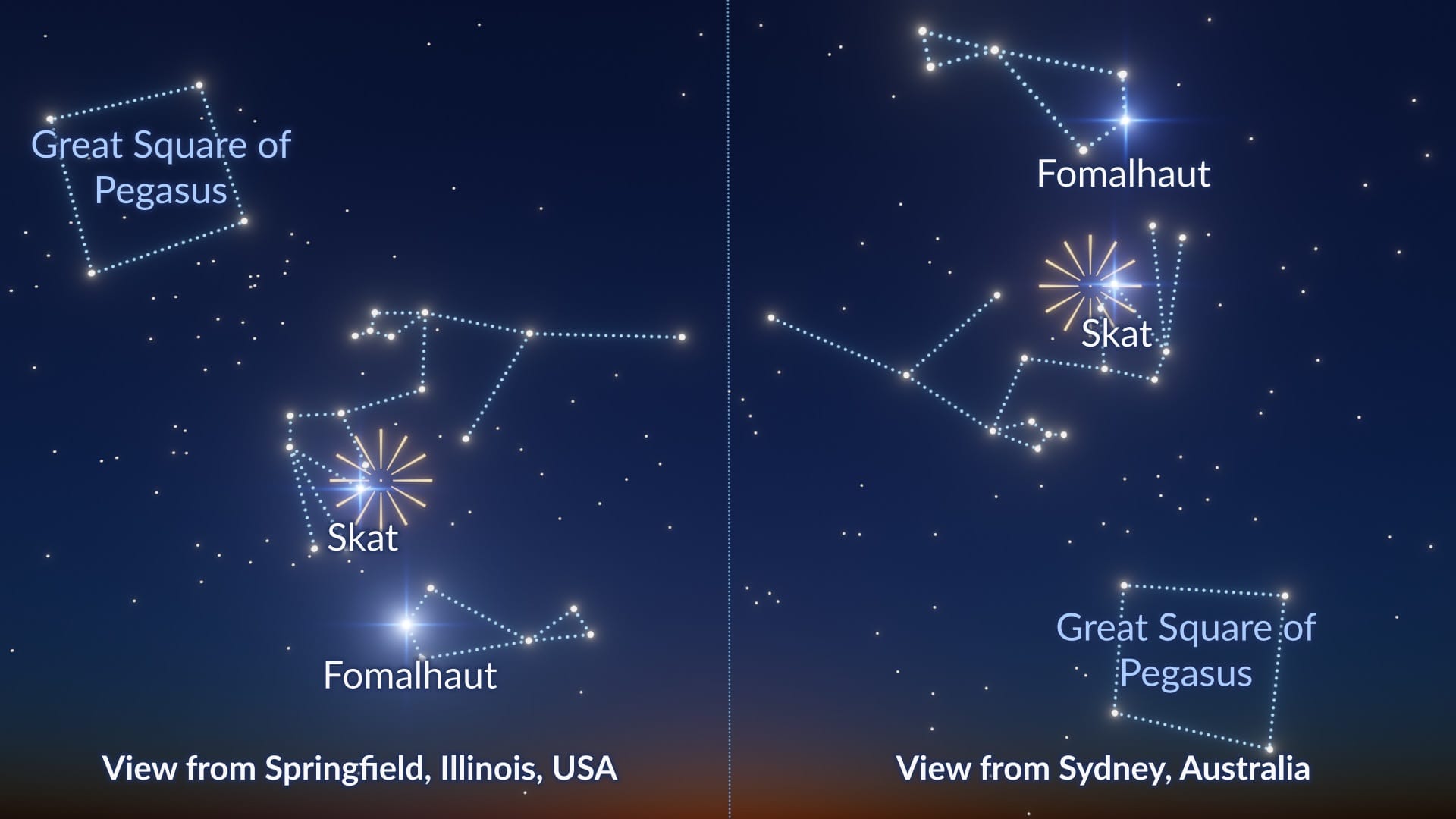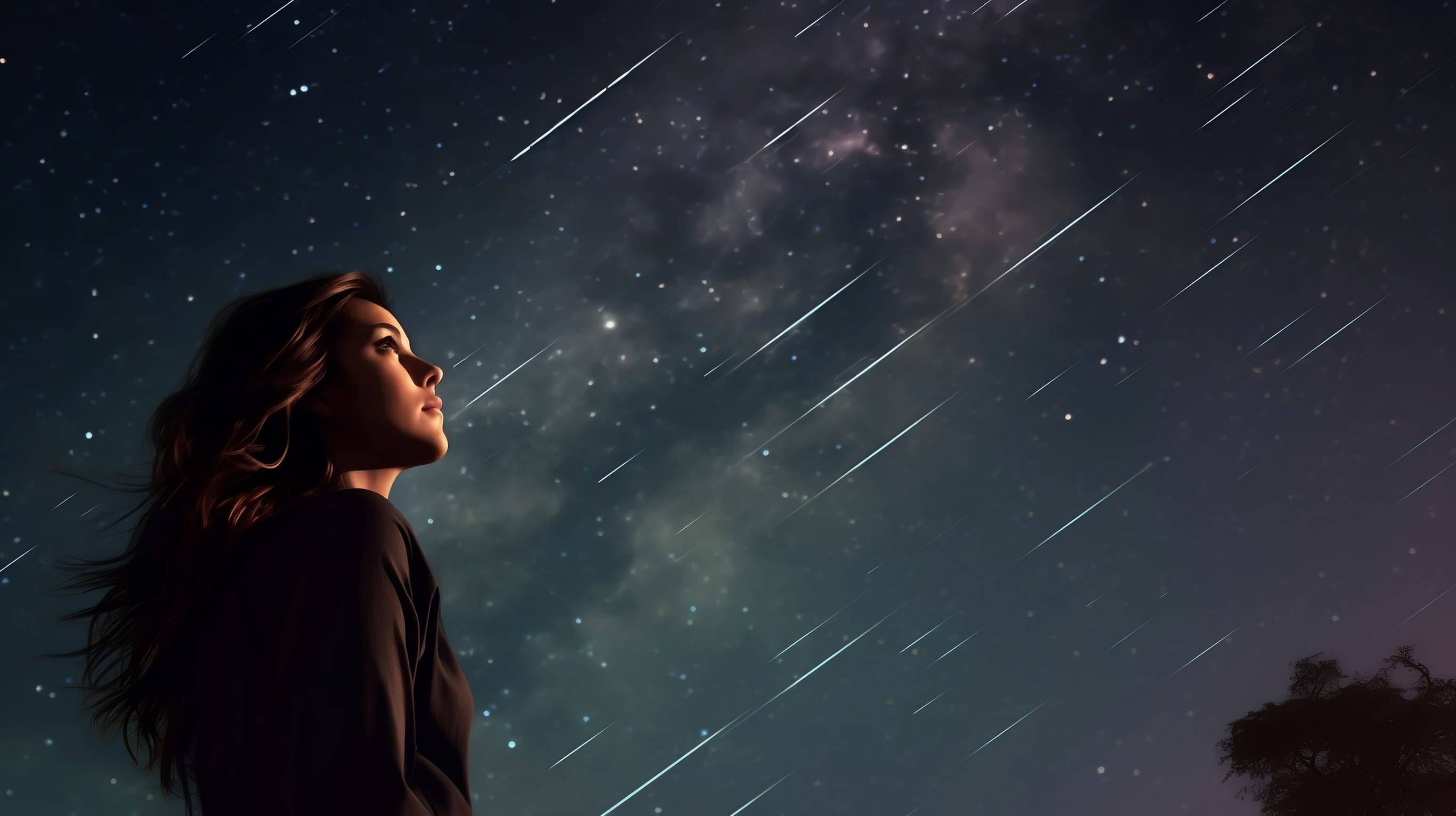Southern Delta Aquariids & Other Meteor Showers in Late July 2026
Get ready for a double meteor shower in the night sky! At the end of July, two meteor streams – the Southern Delta Aquariids and the Alpha Capricornids – will peak on the same night! However, the bright Moon might spoil the view. In total, four meteor showers will reach their maximum in late July, but this overlapping peak is the real highlight. Keep reading to find out when and where to look for meteors and how to catch as many shooting stars as possible. Want an all-in-one stargazing calendar in your pocket? Download the Sky Tonight app and never miss a meteor!
Southern Delta Aquariids 2026: When and where to watch

The Southern Delta Aquariids (often simply called the Delta Aquariids or δ-Aquariids) are one of the most reliable and long-lasting meteor showers of the year. Although they don’t produce a dramatic peak, their activity remains steady over several weeks, from late July through early August. In 2026, this shower will be especially exciting because it will peak on the same night as the Alpha Capricornids, creating a double display of shooting stars.
- Active: July 12 – August 23
- Peak of activity: July 30–31
- Meteors per hour: 25
- Moon illumination: 98%
- Radiant location: Aquarius
- Parent body: Comet 96P/Machholz
- Best visible from: Southern Hemisphere and low northern latitudes
Southern Delta Aquariids 2026: Visibility forecast
Unfortunately, in 2026, conditions for observing the Southern Delta Aquariids will be poor — the shower peaks right after the Full Moon. The bright Moon will stay above the horizon for much of the night, washing out many of the faint meteors. To improve your chances on peak night, try to observe from a spot where the Moon is hidden by a tree, building, or hillside.
When to watch the Delta Aquariid meteor shower in 2026?
The Delta Aquariids are expected to reach their maximum activity on July 30, 2026. However, this shower is known for its lack of a noticeable peak. Instead, it maintains a consistent level of meteor activity for several nights, making it easier for observers to catch meteors even if they miss the predicted maximum. The shower officially runs from July 12 to August 23, with the best viewing window occurring in the final days of July and the first few days of August.
Given the bright Moon during the Delta Aquariids’ maximum on July 30–31, you might get a better view about a week before the peak. The Moon will be less illuminated and will set around midnight, giving you darker skies and much better odds of catching meteors.
Where to see the Delta Aquariids in 2026?
The Southern Delta Aquariids are best visible from the Southern Hemisphere, where the radiant (in the constellation Aquarius) climbs higher in the sky and stays up longer through the night. However, you don’t need to be far south to enjoy the show. Observers in lower northern latitudes – such as the southern United States, Mexico, southern Europe, and parts of Asia – can also see plenty of meteor activity, especially if they find a location away from city lights.
How to watch the Delta Aquariids in 2026?
To increase your chances of seeing more shooting stars, find a dark location with a wide, open view of the sky. In the Northern Hemisphere, the shower’s radiant appears low in the southern part of the sky, so it’s best to face south. In the Southern Hemisphere, the radiant climbs much higher, often passing nearly overhead, so simply look up and scan the sky in all directions.
Delta Aquariid meteors can appear anywhere in the sky, so the key is to lie back comfortably, allow your eyes about 20–30 minutes to adjust to the darkness, and take in as much of the sky as possible. You won’t need any special equipment – just clear skies, a bit of patience, and a good place to relax.
Curious about how to spot more meteors? Check out our meteor viewing tips in this dedicated article.
How to tell the Delta Aquariids apart from the Perseids?
Since the Delta Aquariids and the Perseids are both active in late July, it’s common to see meteors from both showers on the same night in the Northern Hemisphere. You can tell them apart based on the direction they come from: the Delta Aquariids radiate from the constellation Aquarius, generally in the southern sky, while the Perseids come from the northeast, from the constellation Perseus. If you’re watching around midnight or later and notice meteors coming from multiple directions, you might be lucky enough to catch meteors from both showers!
Alpha Capricornids 2026: When and where to watch

The Alpha Capricornids (α-Capricornids) are a minor meteor shower in terms of meteor count, but they are famous for producing bright, slow-moving fireballs. In 2026, their peak coincides with the peak of the Southern Delta Aquariids, making July 30–31 an especially rewarding night for skywatchers across Australia and the Southern Hemisphere in general.
- Active: July 3 – August 15
- Peak of activity: July 30–31
- Meteors per hour: 5
- Moon illumination: 98%
- Radiant location: Capricornus
- Parent body: Comet 169P/NEAT
- Best visible from: Southern Hemisphere and low northern latitudes
Alpha Capricornids 2026: Visibility forecast
In 2026, the Alpha Capricornids’ maximum occurs soon after the Full Moon, so observing conditions will be unfavorable. Still, this shower is worth a try: Alpha Capricornids are slow and often unusually bright, so a few fireballs may still cut through the glare. For the best odds, watch from a dark place and keep the Moon out of your direct view.
When to watch the Alpha Capricornid meteor shower in 2026?
The Alpha Capricornids are expected to peak on the night of July 30–31, 2026, overlapping with the Southern Delta Aquariids — so you can watch two showers at once. But this year, the nearly full Moon will brighten the sky and hide many faint meteors, so rates will look lower than usual.
For a darker sky, try observing roughly a week before the peak. Around that time, the Moon drops below the horizon near midnight, leaving the late-night hours much better for catching the Alpha Capricornids’ meteors.
By the way, late July isn’t the only time to catch meteors – read our full guide to meteor showers from June to September to plan your next skywatching session.
Where to see the Alpha Capricornids in 2026?
The Alpha Capricornids are well placed for viewing from Australia, where the radiant in the constellation Capricornus passes high overhead. From Sydney to Melbourne, and across Queensland, South Australia, and Western Australia, you’ll have excellent viewing conditions — just make sure to escape the city lights for the best experience.
While the shower favors the Southern Hemisphere, it’s also visible from much of the Northern Hemisphere. Observers at mid-latitudes — including the southern United States, southern Europe, northern Africa, and parts of southern Asia — can still enjoy the display, particularly when the radiant rises higher in the late-night sky.
How to watch the Alpha Capricornids in 2026?
To enjoy the Alpha Capricornids, choose a wide-open, dark-sky location and settle in for a relaxed evening of skywatching. Since the meteors can appear in any part of the sky, it’s best to lie back, look up, and scan broadly. You don’t need to face directly at the constellation Capricornus – meteors will streak across different areas of the sky, especially after the radiant has risen above the horizon.
While the meteor count is low, what makes this shower special is the quality over quantity. The bright fireballs can be truly stunning, and when combined with the more numerous Delta Aquariids, they can create an unforgettable night sky show.
Think you’re ready for the July meteor showers? Take our fun and educational quiz to test your shooting star knowledge.

Minor meteor showers to watch in late July 2026
July Gamma Draconids 2026: A rare northern shower (with a possible outburst!)
The July Gamma Draconids (γ-Draconids) are a rarely observed and highly unpredictable meteor shower that occurs in late July and is visible in the Northern Hemisphere. Typically faint and short-lived, the Gamma-Draconids meteors often go unnoticed – except in rare years when unexpected bursts of activity happen. For instance, in 2016, the Gamma-Draconids surprised observers with a brief but significant outburst. In 2026, the Earth will once again pass through the same region of space where the outburst occurred, making this an especially promising year to keep an eye on the Gamma Draconids.
- Active: July 25 – 31
- Peak of activity: July 28
- Meteors per hour: 5
- Moon illumination: 98%
- Radiant location: Draco
- Parent body: Unknown
- Best visible from: Northern Hemisphere
Piscis Austrinids 2026: A minor southern sky event
The Piscis Austrinids are a faint meteor shower active in late July. While not especially prolific, they contribute a few extra meteors to the skies during an already busy meteor week. Best seen from the Southern Hemisphere, they are often overshadowed by the brighter Delta Aquariids and Alpha Capricornids.
- Active: July 15 – August 10
- Peak of activity: July 29
- Meteors per hour: 5
- Moon illumination: 100%
- Radiant location: Piscis Austrinus
- Parent body: Unknown
- Best visible from: Southern Hemisphere
Late July meteor showers 2026: Bottom line
The final nights of July offer a remarkable opportunity for meteor enthusiasts, with multiple showers peaking simultaneously. A double meteor shower will occur on the night of July 30–31, when the Southern Delta Aquariids and Alpha Capricornids both reach their peak, providing a mix of fast meteors and slow, bright fireballs. The Piscis Austrinids will also be active around the same time, adding a few extra meteors for Southern Hemisphere observers. Meanwhile, the elusive July Gamma-Draconids may deliver a surprise outburst of activity, giving Northern Hemisphere observers one more reason to stay up late. And as a bonus, the first Perseid meteors will already be active by late July, offering an early glimpse of August’s most famous meteor shower!
To find the best viewing times and radiant positions for your location, download the Sky Tonight app. It’s your personalized, real-time stargazing guide. If you’d like to brush up on how meteor showers work and how to observe them, check out our colorful infographic.

